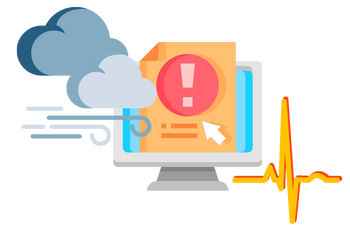How to Reduce the Bullwhip Effect
Built For


Before we discuss how to reduce the bullwhip effect, let’s define the bullwhip effect.
According to QuickBooks, the definition of the bullwhip effect is as follows:
The bullwhip effect (also known as the “whiplash” or the “whipsaw” effect) in supply chain management refers to the phenomenon of increasing fluctuations in inventory in response to shifts in customer demand as one moves further up the supply chain. In other words, inventory swings in bigger and bigger “waves” in response to customer demand, which acts as the handle of the whip. The largest “wave” of the whip hits the supplier of raw materials, causing them to see the biggest demand variation in response to changing customer demand.
With a clear understanding of the bullwhip effect, let’s explore the causes of and the solutions of the phenomenon, how to reduce the bullwhip effect, and how to prevent it from disrupting your supply chain.
How to Reduce the Bullwhip Effect: An Example of How it Starts
To understand how to reduce the bullwhip effect, one must first realize how it begins.

Pretend you are a cheese wholesaler typically selling 600 blocks of cheese per week to a certain customer. One week, this customer doubles their order to 1200 blocks of cheese. This need for more cheese leads you to believe demand is increasing, so you order 1200 blocks of cheese from your supplier to be prepared for the next order. The supplier, seeing your need for cheese, assumes they also need to increase their orders from the manufacturer. These three actions are one way the bullwhip effect becomes amplified and disruptive through the supply chain – because the customer who needed more one week, did not need any more than their regular order thereafter. Now the wholesaler, the supplier, and the manufacturer have more inventory than necessary – and considering cheese is a perishable good, this amplifies the issue.
This particularly example highlights only one of the causes of the bullwhip effect – a surprise shift in demand, or so they thought. Let’s continue to the next section to discuss more causes.
How to Reduce the Bullwhip Effect: The Causes

Before diving into solutions on how to reduce the bullwhip effect, let’s look at the four main causes that lead to the bullwhip effect.
- Lack of Inventory Visibility: Not having a clear view into your inventory or relying on inaccurate or guessed inventory numbers leads to over or under purchasing. This can kick off the bullwhip effect.
- Demand Forecast Errors: The decisions your business makes when determining demand ripple through your supply chain. When errors in demand are made, whether by too much predicted or too little, this can easily affect not only you, but suppliers, manufacturers, and the rest of your orbit.
- Order Batching: Buying orders in large quantities without repurchasing over longer periods as opposed to ordering small quantities more frequently can lead to the bullwhip effect.
- Surprise Shifts in Demand: Sometimes, regardless of your forecasting, unexpected shifts in demand can catch you off guard. To mitigate the shift, a knee-jerk reaction to ordering much more or much less than you think you need, particularly if the surprise shift was a one-off, the bullwhip effect takes hold.
How to Reduce the Bullwhip Effect: The Solutions

Ready to know how to reduce the bullwhip effect, maybe even prevent it when you can? Here’s a list of solutions to keep in mind going forward.
- Optimize Inventory Management: All product-selling businesses are driven by inventory, and how that inventory is managed can make or break your business. If you are still relying on manual inventory management, your visibility is greatly decreased. Invest in the right system and optimize.
- Utilize Your Data: For both demand forecasting and those unexpected demand shifts, turn to your data. Forecasting is predicting, which means you may not be 100% on the mark every time. But ensuring the data you have is accurate and constantly updated can go a long way to improving forecasting accuracy. Alternatively, if a customer presents an unexpected need for quite a bit more or less of whatever item, review their purchasing history and use the data to make your best judgements on whether making big purchasing changes are required.
- Smaller, More Frequent Orders: Switch it up. Instead of only ordering large, infrequent orders from your suppliers, opt for small, more frequent batches. This will help keep inventory stocks balanced and allow you to be more prepared for unexpected shifts in demand.
Call us at 817-870-1311





